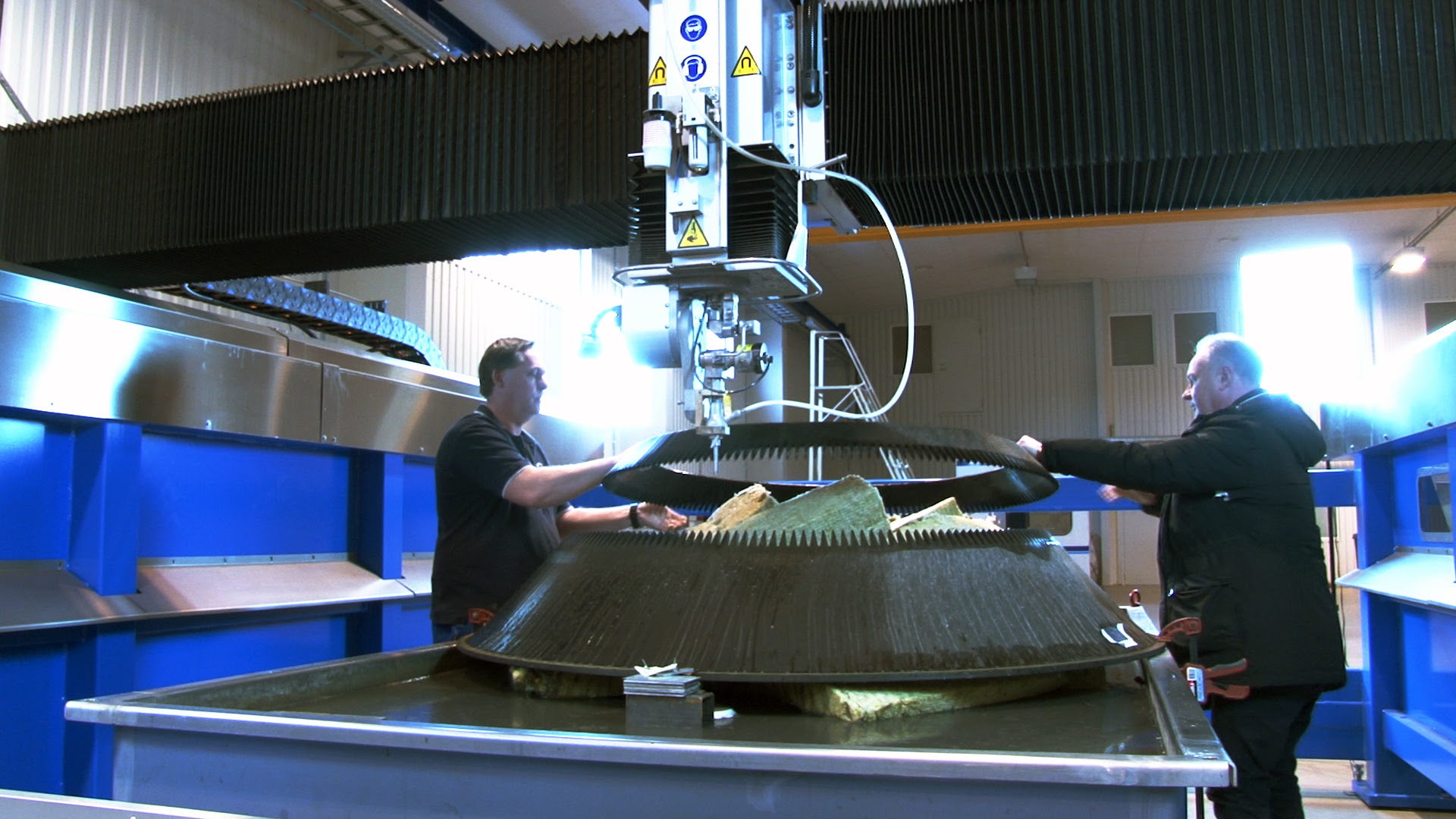
A Swedish supplier of payload adapters and separation systems for commercial space launch vehicles has recently developed payload adapter systems made of 100% carbon fiber.
The purpose of the two systems is to bring a satellite into orbit, ensuring that satellite and rocket remain securely attached to one another during the journey into space, and then deliver the payloads into orbit with precision.
Current payload adaptors are made of aluminum and carbon fiber technology bolted together into a cone, several meters in diameter. While over 600 separations have been carried out in orbit with a 100% success rate, calculations have shown that payload adapter systems in 100% carbon fiber could improve weight and stiffness. Instead of bolting the two Payload Adapter pieces together finger joints could also be used.
In tests, the carbon fiber was cut into 47 mm long finger joints in a cone shaped 12 mm thick with a circumference of 7.2 m using FiveX waterjet technology from Water Jet Sweden. The incision reportedly needed a tolerance of 0.1 mm around the circle, to be able to safely be glued together.
‘Our FiveX machine system is unique since it has a combination of extreme precision and a full 3D abrasive cutting ability,’ said Tony Ryd, CTO at Water Jet Sweden. ‘It is specially designed for this kind of advanced applications, cutting with a repetition accuracy of +/- 0.025 mm.’
This story uses material fromWater Jet Sweden, with editorial changes made by Materials Today. The views expressed in this article do not necessarily represent those of Elsevier.




